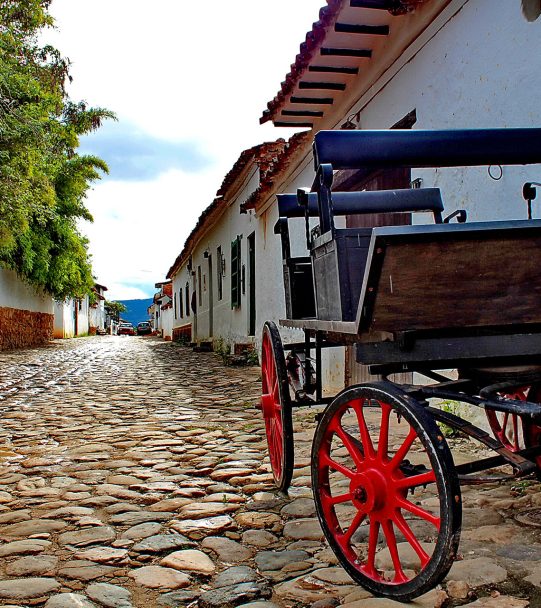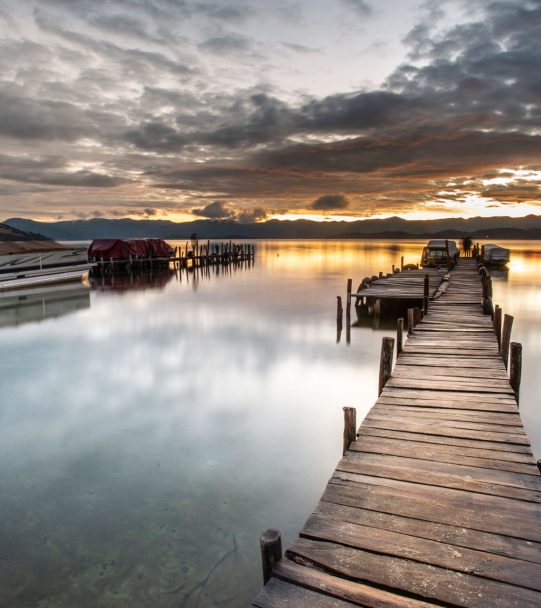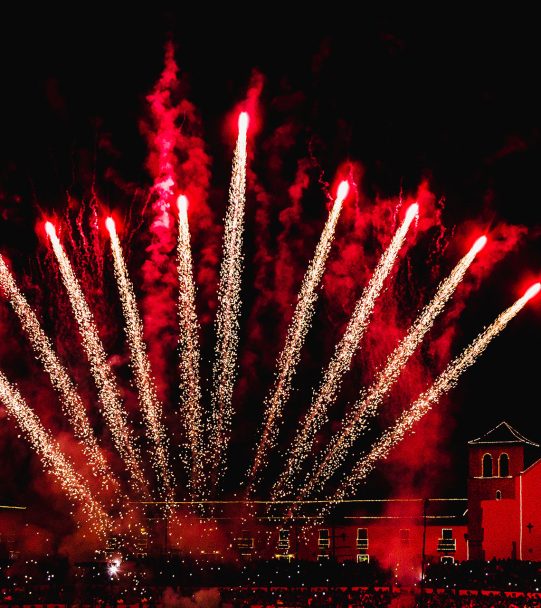Boyaca
Discover the department of Boyacá, located in the heart of the country. Colombia, Tunja, a territory that reflects the Andean spirit with its mix of history, tradition and amazing landscapes. Its capital, Tunja, recognized for its security and cultural legacy, is a city with deep indigenous and colonial roots. Boyacá offers a diverse geography that ranges from moors and mountains to valleys and warm zones, allowing visitors to enjoy unique experiences at any time of the year. Boyacá invites you to get to know the authentic soul of Colombia.
Connectivity
From Bogotá, Tunja can be reached in approximately two and a half hours by road, which makes the department a nearby destination for those traveling from the center of the country. Although there are no direct commercial flights, it is possible to arrive at El Dorado Airport in Bogota and continue the trip by land. Boyacá awaits you with history, culture and nature to discover.
Boyaca
Subscribe to receive news about Caminos Andinos
Temperature
Annual average of 11° and 15°C depending on altitude.
Weather
It varies from cold temperate in high areas to warm dry or humid in valleys or low areas.
More destinations
Activities and attractions
Discover Boyacá, a destination that connects you with history, nature and Andean authenticity. Tour Tunja and Villa de Leyva, colonial jewels with squares, churches and museums that narrate centuries of cultural legacy. Explore the Suamox Archaeological Museum in Sogamoso and immerse yourself in Muisca wisdom. Venture into high altitude landscapes such as Lake Tota, Iguaque Lagoon and the majestic Sierra Nevada del Cocuy. Experience the magic of festivals such as the Festival of Lights or the Ruana Festival. Taste its traditional cuisine with the Boyacá stew and discover unique handicrafts in towns like Ráquira. Boyacá awaits you with unforgettable experiences.
Sunrise in Tota
PHOTO: Tota Lagoon, Boyacá - Gustavo Adolfo Niño Rojas - Vice-Ministry of Tourism of Colombia
Villa de Leyva at night
PHOTO: Villa de Santa María, Villa de Leyva, Boyacá - Guillermo Londoño Jaramillo - Vice-Ministry of Tourism of Colombia
The Magic Of The Ball
PHOTO: Monguí, Boyacá - María Nelly Rincón - Vice-Ministry of Tourism of Colombia
When the night comes
PHOTO: Villa de Leyva, Boyacá - Milton Fernando Bello Mendoza - Vice-Ministry of Tourism
Discover what we do
-
-
CULTURE
Tunja and Villa de Leyva: Andean cities with colonial heritage
Explore Tunja and walk through its historic center, declared a National Monument, one of the best preserved in the country. Discover the Plaza de Bolivar, the imposing Metropolitan Cathedral Basilica Santiago de Tunja, the Church of Nuestra Señora del Milagro del Topo, Santo Domingo Temple and Museum of Santa Clara la Real. Also visit the Cojines del Zaque, ancient stone monuments linked to Muisca rituals, and the mysterious Pozo de Hunzahúa, surrounded by ancestral legends.
Just an hour away, Villa de Leyva captivates with its cobblestone central square where the Church of Our Lady of the Rosary and the House of the First Congress stand out. Visit the Antonio Nariño House Museum and the Cloister of San Agustin, a colonial religious building that houses the biological collections of the Alexander von Humboldt Institute. Tunja and Villa de Leyva are waiting for you with living history, colonial charm and Andean cultural legacy.
Eliecer Silva Celis Archaeological Museum: Great Pre-Hispanic Civilizations
Visit the Eliécer Silva Celis Archaeological Museum in Sogamoso and discover the legacy of the Muisca culture. Visit ancient tombs, traditional dwellings and a garden with plants traditionally used by the Muisca in medicine, food and rituals. Its main attraction is the Temple of the Sun, rebuilt to pay homage to the solar deity. A place that connects the visitor with the ancestral history and the spirit of the Andean peoples.
Local charm: Casa Terracotta and Pueblito Boyacense
Discover the Terracotta House, one of the most unique constructions in Colombia, located in Villa de Leyva. Made entirely of sun-baked clay, this house-sculpture combines art, architecture and sustainability in one place. Walk through its curved, colorful spaces, full of unique details that awaken the imagination. Also, be sure to visit the Pueblito Boyacense, in Duitama, a destination that reflects the colonial architecture, its wooden balconies and clay roofs typical of the small towns of Boyacá. These destinations offer you an artistic and cultural experience that will connect you with the soul of Boyacá.
-
-
NATURE
Lakes and lagoons: Water that creates and connects
Discover the Tota Lake, the largest in the country, surprising with its Playa Blanca and activities such as kayaking and sailing. The Siscunsí Lagoon, surrounded by frailejones, is ideal for hiking and camping in the middle of the nature. And Laguna Negra, between Mongua and Monguí, invites you to hike in a paramo landscape, with unique flora and a peaceful environment to disconnect. Experience unique landscapes and unforgettable adventures in Boyacá.
Sierra Nevada del Cocuy National Natural Park: Mountains and snow-capped mountains
The Sierra Nevada del Cocuy captivates with more than 18 snow-capped peaks, impressive glaciers and crystalline lagoons that offer unique landscapes. Visitors can explore three trails accompanied by authorized guides, guaranteeing a safe and enriching experience. This destination is ideal for those seeking adventure, connection with nature and respect for ancestral traditions.
Iguaque Flora and Fauna Sanctuary:
Visit the Flora and Fauna Sanctuary of Iguaque, a sacred place for the Muiscas and one of the most special natural scenery of Boyacá. Its main attraction, the Laguna de Iguaque, a site of unparalleled beauty. Walk along its trails among frailejones, orchids and cloud forests, and observe deer and foxes in their natural habitat. Ideal for ecological hikes, this sanctuary offers a unique experience of nature, culture, and spirituality in the Colombian Andes.
-
-
ANCESTRAL COMMUNITIES AND RURALITY
Discover the living roots of Boyacá through the ancestral communities that preserve the legacy of the Muisca culture. In municipalities such as Ráquira, Tota, Cuítiva and Sogamoso, you can learn about traditions that are expressed in handcrafted ceramics, weavings, traditional medicine and festivities linked to the agricultural calendar. Visiting these places is an opportunity to connect with an ancient history and live authentic experiences that reflect the Andean identity.
Holidays:
Boyacá proudly celebrates its festivities full of tradition. In December, Villa de Leyva lights up with the Fiesta de las Luces, a nighttime spectacle of lanterns, candles and fireworks that dazzles locals and visitors alike. In August, Tunja celebrates its Festival of Culture with music, theater, dances and local gastronomy. And in May, Paipa hosts the National Festival of the Ruana and the Pañolón, a joyful event that exalts rural traditions with parades, carranguera music and lots of folklore.
-
-
GASTRONOMY
Paipa cheese: Flavors of origin and tradition
Paipa Cheese is one of the most flavors The cheese is the most representative of Boyacá and has a designation of origin thanks to its quality and tradition. Along the Paipa Cheese Tourist Route, visitors can learn how this product is made, participate in workshops with local producers and enjoy tastings while traveling through rural landscapes full of charm. An experience that combines gastronomy, culture and nature in a single tour.
Traditional Andean cuisine:
Boyacá offers a traditional cuisine that reflects the richness of its land and culture. Try the cocido boyacense, a hearty dish with various meats, potatoes, yucca and corn on the cob. Enjoy the mazamorra chiquita, a thick soup of corn, potatoes, beans and guascas, a symbol of Andean identity. Delight yourself with the mute, prepared with pork and grains. Don't miss the rib broth, perfect for the cold weather. And for dessert, savor the brevas de arequipe, which are figs with dulce de leche. Boyacá invites you to savor its tradition.
-
-
CRAFTS
Andean textiles:
The ruana, a traditional Boyacá garment made of sheep wool, reflects the Andean identity and climate. Its open and comfortable design is ideal for cold areas. More than clothing, it symbolizes the local culture and keeps alive the crafts traditional, supporting the regional economy.
In Ráquira, known as the artisan town of Boyacá, its handmade textiles and ceramics, which preserve ancestral techniques, stand out. Visiting Ráquira allows you to discover the local talent and take back unique memories of the region, among colorful workshops and markets full of tradition.
CULTURE
Tunja and Villa de Leyva: Andean cities with colonial heritage
Explore Tunja and walk through its historic center, declared a National Monument, one of the best preserved in the country. Discover the Plaza de Bolivar, the imposing Metropolitan Cathedral Basilica Santiago de Tunja, the Church of Nuestra Señora del Milagro del Topo, Santo Domingo Temple and Museum of Santa Clara la Real. Also visit the Cojines del Zaque, ancient stone monuments linked to Muisca rituals, and the mysterious Pozo de Hunzahúa, surrounded by ancestral legends.
Just an hour away, Villa de Leyva captivates with its cobblestone central square where the Church of Our Lady of the Rosary and the House of the First Congress stand out. Visit the Antonio Nariño House Museum and the Cloister of San Agustin, a colonial religious building that houses the biological collections of the Alexander von Humboldt Institute. Tunja and Villa de Leyva are waiting for you with living history, colonial charm and Andean cultural legacy.
Eliecer Silva Celis Archaeological Museum: Great Pre-Hispanic Civilizations
Visit the Eliécer Silva Celis Archaeological Museum in Sogamoso and discover the legacy of the Muisca culture. Visit ancient tombs, traditional dwellings and a garden with plants traditionally used by the Muisca in medicine, food and rituals. Its main attraction is the Temple of the Sun, rebuilt to pay homage to the solar deity. A place that connects the visitor with the ancestral history and the spirit of the Andean peoples.
Local charm: Casa Terracotta and Pueblito Boyacense
Discover the Terracotta House, one of the most unique constructions in Colombia, located in Villa de Leyva. Made entirely of sun-baked clay, this house-sculpture combines art, architecture and sustainability in one place. Walk through its curved, colorful spaces, full of unique details that awaken the imagination. Also, be sure to visit the Pueblito Boyacense, in Duitama, a destination that reflects the colonial architecture, its wooden balconies and clay roofs typical of the small towns of Boyacá. These destinations offer you an artistic and cultural experience that will connect you with the soul of Boyacá.
NATURE
Lakes and lagoons: Water that creates and connects
Discover the Tota Lake, the largest in the country, surprising with its Playa Blanca and activities such as kayaking and sailing. The Siscunsí Lagoon, surrounded by frailejones, is ideal for hiking and camping in the middle of the nature. And Laguna Negra, between Mongua and Monguí, invites you to hike in a paramo landscape, with unique flora and a peaceful environment to disconnect. Experience unique landscapes and unforgettable adventures in Boyacá.
Sierra Nevada del Cocuy National Natural Park: Mountains and snow-capped mountains
The Sierra Nevada del Cocuy captivates with more than 18 snow-capped peaks, impressive glaciers and crystalline lagoons that offer unique landscapes. Visitors can explore three trails accompanied by authorized guides, guaranteeing a safe and enriching experience. This destination is ideal for those seeking adventure, connection with nature and respect for ancestral traditions.
Iguaque Flora and Fauna Sanctuary:
Visit the Flora and Fauna Sanctuary of Iguaque, a sacred place for the Muiscas and one of the most special natural scenery of Boyacá. Its main attraction, the Laguna de Iguaque, a site of unparalleled beauty. Walk along its trails among frailejones, orchids and cloud forests, and observe deer and foxes in their natural habitat. Ideal for ecological hikes, this sanctuary offers a unique experience of nature, culture, and spirituality in the Colombian Andes.
ANCESTRAL COMMUNITIES AND RURALITY
Discover the living roots of Boyacá through the ancestral communities that preserve the legacy of the Muisca culture. In municipalities such as Ráquira, Tota, Cuítiva and Sogamoso, you can learn about traditions that are expressed in handcrafted ceramics, weavings, traditional medicine and festivities linked to the agricultural calendar. Visiting these places is an opportunity to connect with an ancient history and live authentic experiences that reflect the Andean identity.
Holidays:
Boyacá proudly celebrates its festivities full of tradition. In December, Villa de Leyva lights up with the Fiesta de las Luces, a nighttime spectacle of lanterns, candles and fireworks that dazzles locals and visitors alike. In August, Tunja celebrates its Festival of Culture with music, theater, dances and local gastronomy. And in May, Paipa hosts the National Festival of the Ruana and the Pañolón, a joyful event that exalts rural traditions with parades, carranguera music and lots of folklore.
GASTRONOMY
Paipa cheese: Flavors of origin and tradition
Paipa Cheese is one of the most flavors The cheese is the most representative of Boyacá and has a designation of origin thanks to its quality and tradition. Along the Paipa Cheese Tourist Route, visitors can learn how this product is made, participate in workshops with local producers and enjoy tastings while traveling through rural landscapes full of charm. An experience that combines gastronomy, culture and nature in a single tour.
Traditional Andean cuisine:
Boyacá offers a traditional cuisine that reflects the richness of its land and culture. Try the cocido boyacense, a hearty dish with various meats, potatoes, yucca and corn on the cob. Enjoy the mazamorra chiquita, a thick soup of corn, potatoes, beans and guascas, a symbol of Andean identity. Delight yourself with the mute, prepared with pork and grains. Don't miss the rib broth, perfect for the cold weather. And for dessert, savor the brevas de arequipe, which are figs with dulce de leche. Boyacá invites you to savor its tradition.
CRAFTS
Andean textiles:
The ruana, a traditional Boyacá garment made of sheep wool, reflects the Andean identity and climate. Its open and comfortable design is ideal for cold areas. More than clothing, it symbolizes the local culture and keeps alive the crafts traditional, supporting the regional economy.
In Ráquira, known as the artisan town of Boyacá, its handmade textiles and ceramics, which preserve ancestral techniques, stand out. Visiting Ráquira allows you to discover the local talent and take back unique memories of the region, among colorful workshops and markets full of tradition.
 Skip to content
Skip to content












